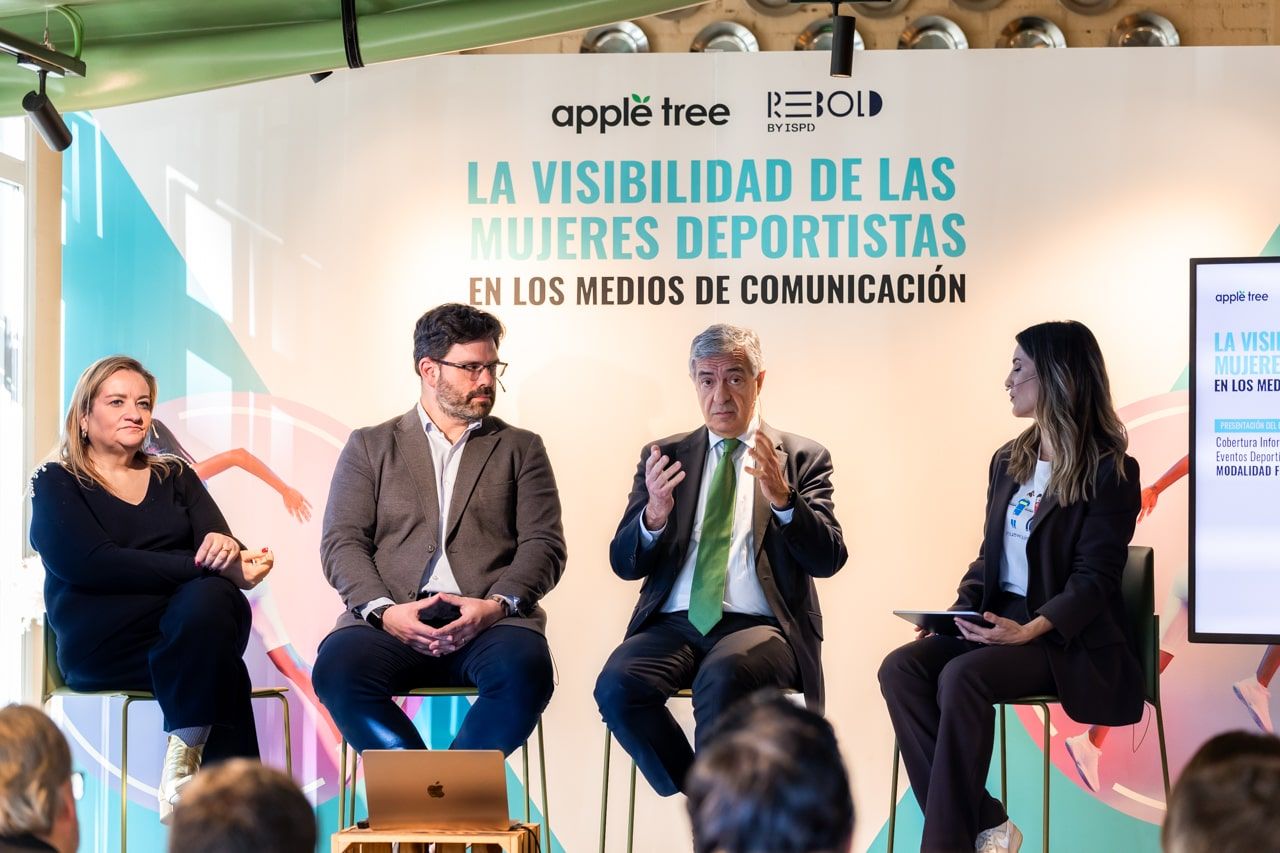Equality between men and women remains a work in progress. While we’ve made significant progress, some areas remain inexplicably unequal. Take sport, for example. Women footballers typically earn ten times less than men simply because of their gender. On top of that, they get much less media coverage. It’s no surprise it took the Spanish women’s team winning the World Cup for them to finally get the recognition they deserve.
At APPLE TREE, we’ve been studying this media issue for years. The media plays a huge role in shaping how we see the world and sets the bar for future generations. That’s why our research, ‘The visibility of women athletes in the media’ (done with Rebold), found that women’s sports only get 29% of the media coverage compared to men’s (which gets 71%). The good news is that it’s 15% more coverage than last year. The bad news: we’re still a long way off from reaching a fair 50/50 split.
To better understand our research findings, we spoke to four media professionals, a sports organisation, and a company that sponsors women’s sports. We wanted to hear their views on bridging the gap in media coverage for female athletes.
Danae Boronat, a sports journalist and author of the book ‘No las llames chicas, llámalas futbolistas: Del maltrato al reconocimiento: la lucha por la igualdad en el futbol’ (‘Don’t Call Them Girls, Call Them Footballers: From Abuse to Recognition: The Fight for Equality in Football’), agreed that progress has been made, but there’s a long way to go. She highlighted that “women only seem to make headlines or front pages for major sporting achievements. Anything less, and the media ignore them.”
The number of news stories about women’s sports is still much lower than men’s. But Alfredo Orte, co-author of the study and a media analyst at Rebold, is optimistic. “Women’s sports coverage jumped from an average of 14% in 2022 to 29% in 2023,” he says. This suggests a positive shift, but it’s too early to tell if it will last.
Changing media trends takes time, but women’s sporting successes are driving more attention. Take football, for example. The Spanish national team’s World Cup win, FC Barcelona’s Women’s Champions League title, and Aitana Bonmatí’s Golden Ball award all put women’s football in the spotlight. The professionalisation of the sport, with the creation of the Liga F women’s league, also played a role.
Pedro Malabia, Managing Director of Strategy, sees Liga F as a crucial step. “We’ve waited years for this recognition,” he says. “Professional status is a message, a wake-up call, that women’s football is here to stay. And we feel a responsibility to pave the way for other women’s sports to become professional too.”
Brands and companies also have a role to play in giving women’s sport the recognition it deserves. Iberdrola, for example, is a leader in supporting women’s athletics. Luis Gómez, a Senior Advisor at Iberdrola, explained at the meeting that the company’s focus goes beyond sponsorship. “We don’t just sponsor for publicity or profit,” he said. “We actively promote women’s sport to achieve equality through sport.” They currently support 32 sports federations and over 600,000 female athletes.
Carmen Colino, editor-in-chief of sports newspaper AS, is optimistic the growing interest in women’s sport isn’t just a fad. “Women’s football is still on a roll, generating a lot of buzz,” she says. “People are asking questions; it’s become a topic of conversation with friends and family, which makes me happy. Now I’m really looking forward to seeing what unfolds at the Olympics this summer.”
About ‘The visibility of sportswomen in the media’.
To understand the gap in media coverage, we analysed over 115,000 sports reports from 2023. These included both men’s and women’s events for sports like football (Champions League, Copa del Rey and Copa de la Reina), tennis (Mutua Madrid Open), and cycling (Tour de France). The good news is that the gap in media coverage between men’s and women’s sports is narrowing. But the bad news is that there’s still a long way to go for equal representation.


